Crucial Pro Overclocking DDR5-6000 32GB Kit Review
We’re going to try to make today’s review quick and easy: It is just a memory kit after all, and without such additions as RGB we’re left only to test its performance and take our shot at overclocking. Speaking of which, Crucial’s lifetime limited warranty applies, though its warranty details excluded any damage to the rest of your system that modules blown by overclocking might cause.
| Crucial Pro Overclocking 32GB DDR5-6000 C36 CP2K16G60C36U5W | |
| Capacity | 32 GB (2x 16GB) |
| Data Rate | DDR5-6000 (EXPO, XMP) |
| Primary Timings | 36-38-38-80 (2T) |
| Voltage | 1.35 Volts |
| Height | 34.9mm |
| Warranty | Lifetime |
| Price When Tested | $103.00 |
Each 32GB kit contains two CP16G60C36U5W sixteen-gigabyte modules, and the model number portion after the decimal (M8D1) seems to imply that the memory underneath is Micron’s so-called D-die. We expect it to overclock differently from the Hynix parts that we normally get at DDR5-6000 and above, but also anticipate noticeable improvements over its previous generation.
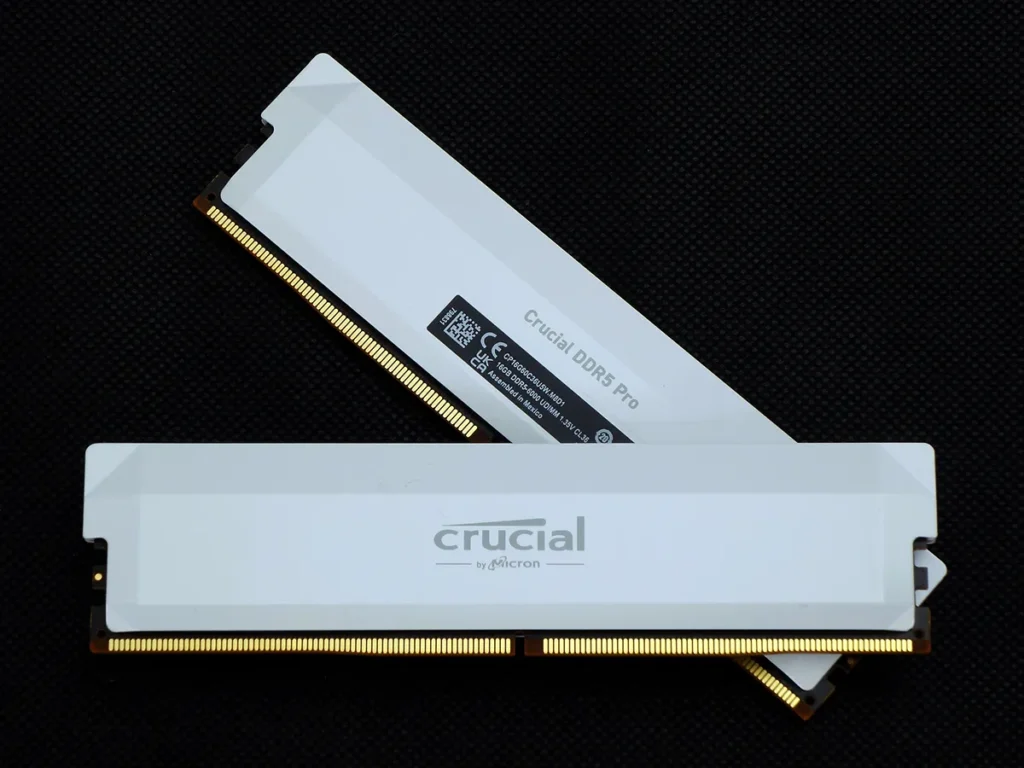
Overclocking profiles for both AMD EXPO and Intel XMP allow Socket AM5 and LGA 1700 users to pick from the kit’s 1.35V DDR5-6000 CAS 36 and 1.25V DDR5-5600 CAS 36 settings: Left to its own programing, our Z790 Tachi Carrara selected the memory’s DDR5-5600 non-XMP setting at a standard 1.10V using ordinary CAS 45 timings before we intervened by enabling XMP from motherboard BIOS.
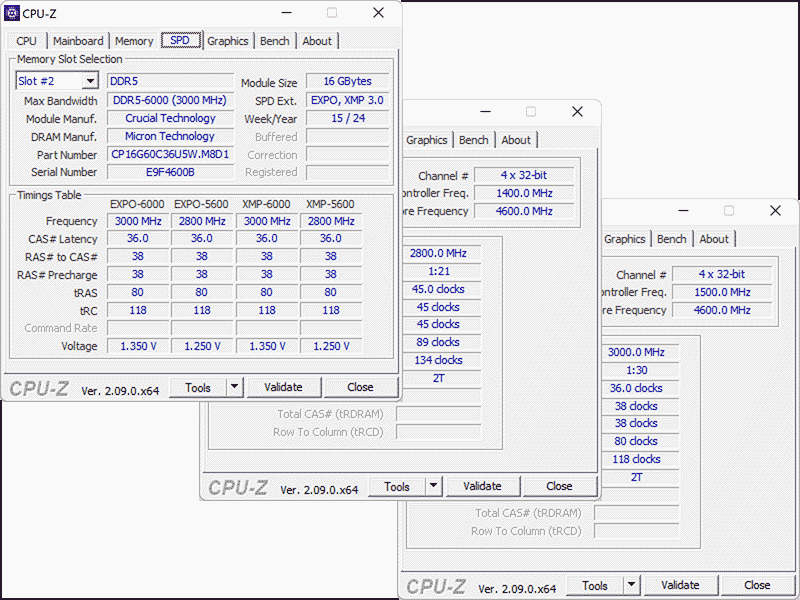
After several years of fighting for Z690 supremacy, our legacy motherboard finally succumbed to too many CPU reinstallations (though we may try to revive it later). The good news is that after a firmware update, our Z790 Taichi sample supports the same high data rates. Unfortunately, that change would mean that we’d need to retest everything we were comparing to get accurate comparison data.
| Test Hardware | |
| CPU | Intel Core i9-13900K: 24C/32T, 3.0-5.8 GHz, 36 MB L3 Cache, LGA 1700 |
| CPU Cooler | Alphacool Core 1 Aurora CPU, VPP655 with Eisbecher D5 150mm, NexXxoS UT60 X-Flow |
| Motherboard | ASRock Z790 Taichi Carrara, BIOS 12.13 |
| Graphics | ASRock RX 7700 XT Phantom Gaming 12GB OC |
| Hard Drive | Crucial T700 PCIe Gen5 2TB M.2 SSD |
| Power | be quiet! Dark Power Pro 10 850W: ATX12V v2.3, EPS12V, 80 PLUS Platinum |
| Sound | Integrated HD Audio |
| Network | Integrated Wi-Fi |
On the positive side, retesting the comparison memory meant that we were no longer bound to our old hardware: We upgraded our graphics card to ASRock’s RX 7700XT and our SSD to Crucial’s T700 in order to maximize the speed at which data can be retrieved by and demanded from memory.
Latency Tuning & Overclocking Results
We tried very hard to get the same timings from the Crucial Pro Overclocking’s Micron memory as we had from the Hynix chips used in the comparison modules, but DDR5-6400 simply wasn’t possible at CAS 32. Having said that, it was possible at the kit’s native C36 timings, and we even squeezed it down to CAS 34 with a little effort.
| Lowest Stable Timings | |||
| DDR5-6400 | DDR5-5600 | DDR5-4800 | |
| Crucial Pro Overclocking 32GB DDR5-6000 C36 CP2K16G60C36U5W | 34-37-37-74 (2T) | 30-33-33-66 (2T) | 26-28-28-56 (2T) |
| Viper Elite 5 48GB DDR5-6000 C42 PVER548G60C42KW | 32-38-38-76 (2T) | 28-33-33-66 (2T) | 24-28-28-56 (2T) |
| Lexar THOR OC DDR5-6000 C32 LD5U16G60C32LG-RUD | 32-38-38-76 (2T) | 28-33-33-66 (2T) | 24-28-28-56 (2T) |
We experienced a few oddities with the Pro Overclocking kit, such as a hole (no stability at any settings) at DDR5-6800 and zero overclocking improvements at timings beyond 42-44-44-88.
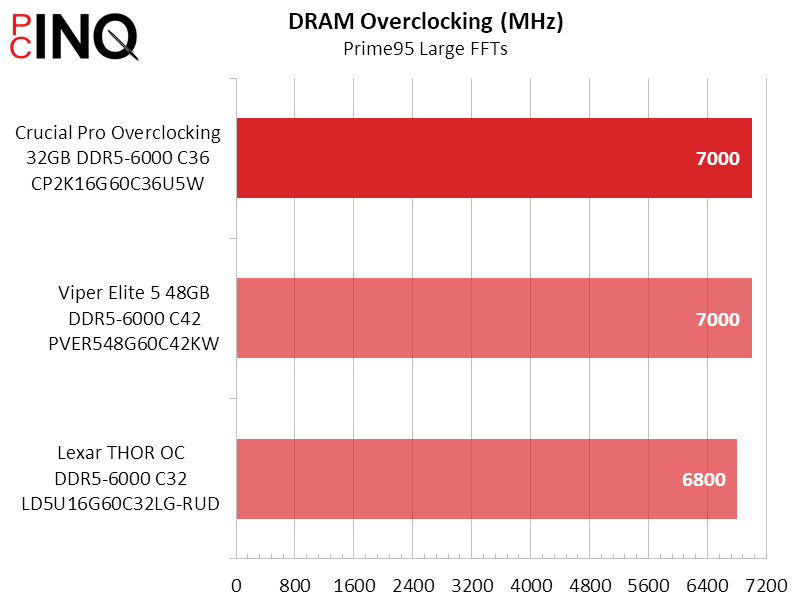
We credit ASRock’s new BIOS for getting the modules stable at DDR5-7000, as well as blaming it for the DDR5-6800 hole we experienced when trying to overclock the Crucial Pro Overclocking kit. That kit did, after all, run DDR5-7000 at a mere 1.35V CAS 42. In fact, neither of the compared kits seemed to benefit from increasing DRAM VDD or VDDQ beyond 1.365V
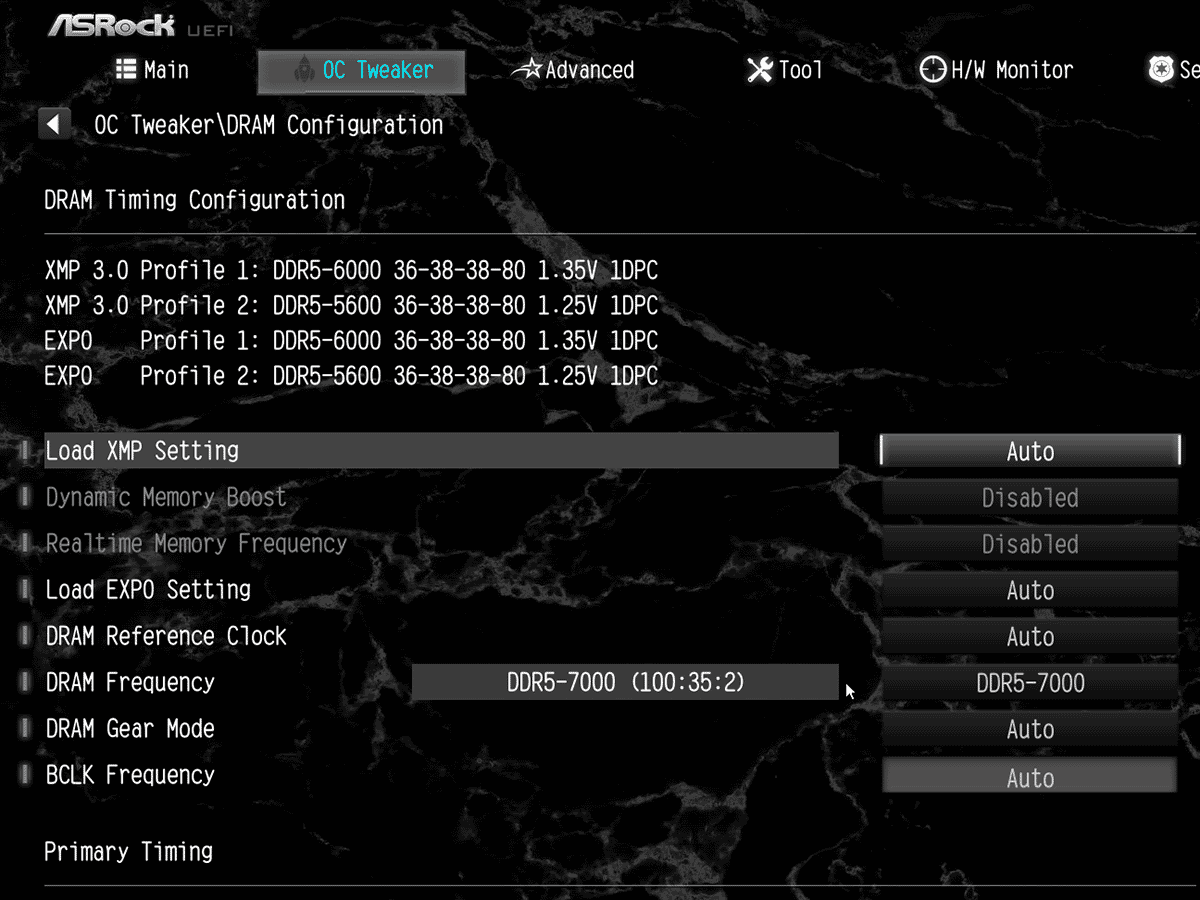
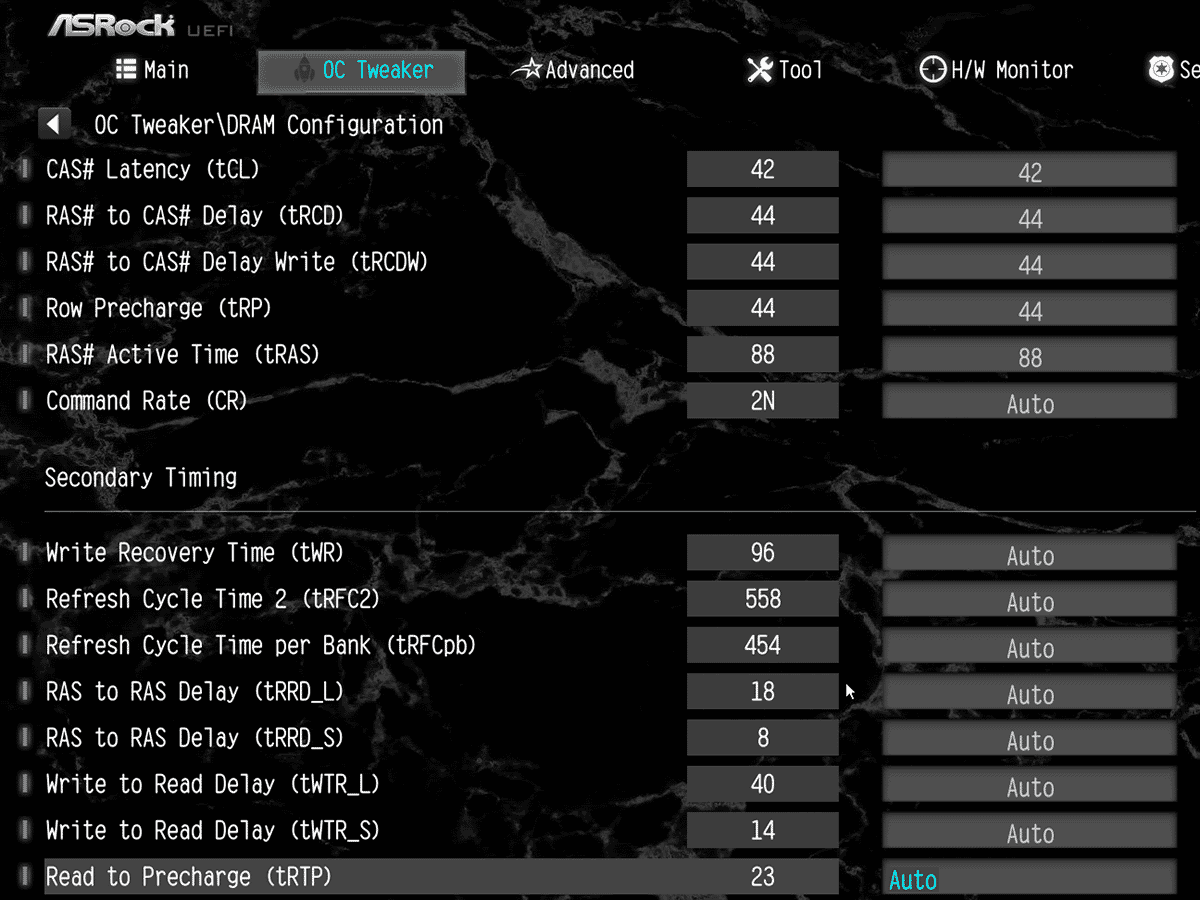
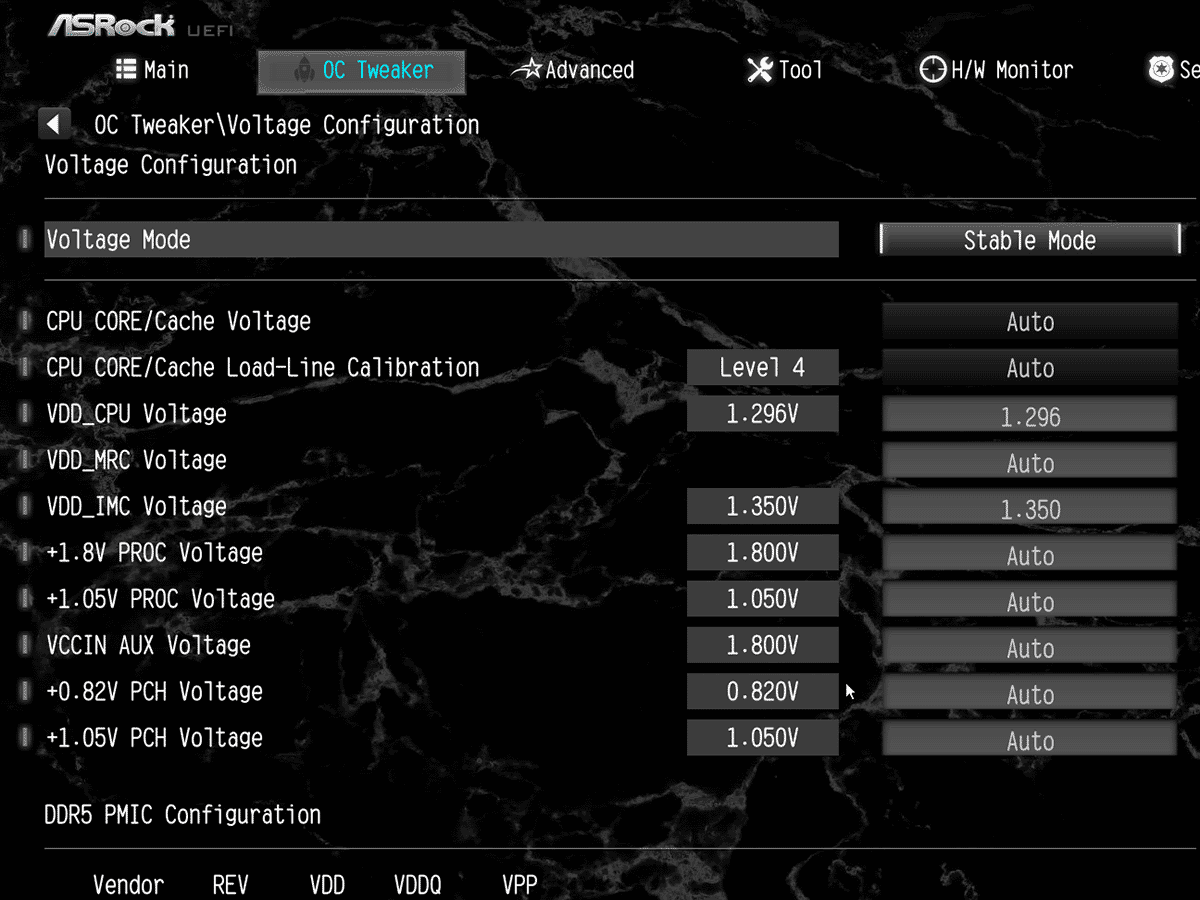

Benchmark Results
We begin with the easily justified benchmarks, where we find that the Micron-equipped Crucial Pro Overclocking’s performance merely matches the Hynix-equipped Thor OC (click each image to enlarge).
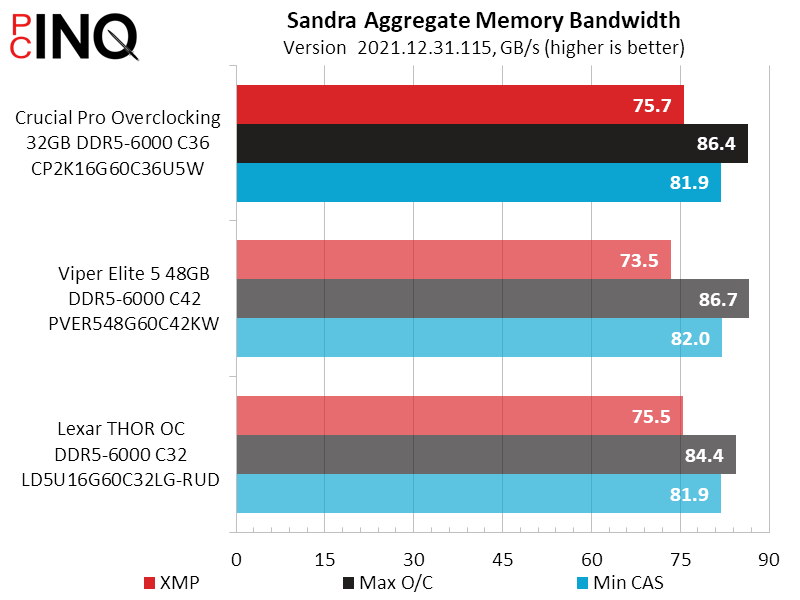
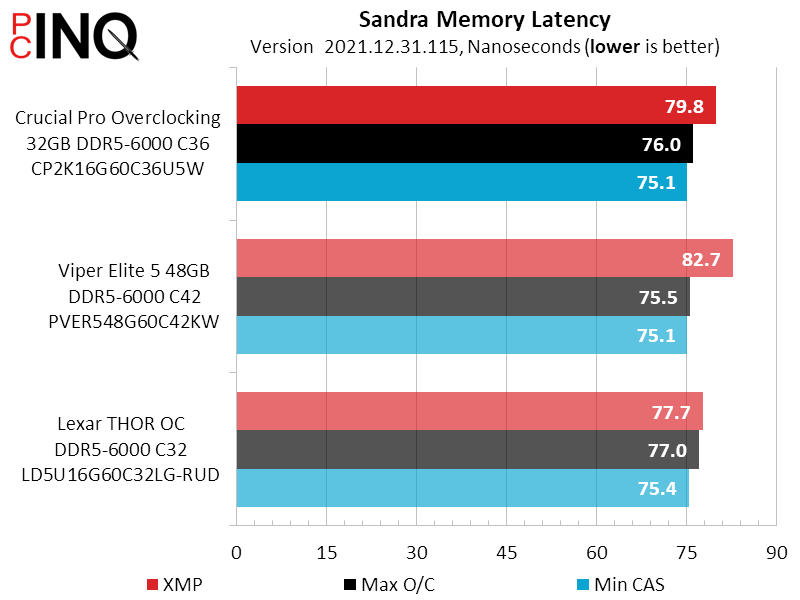
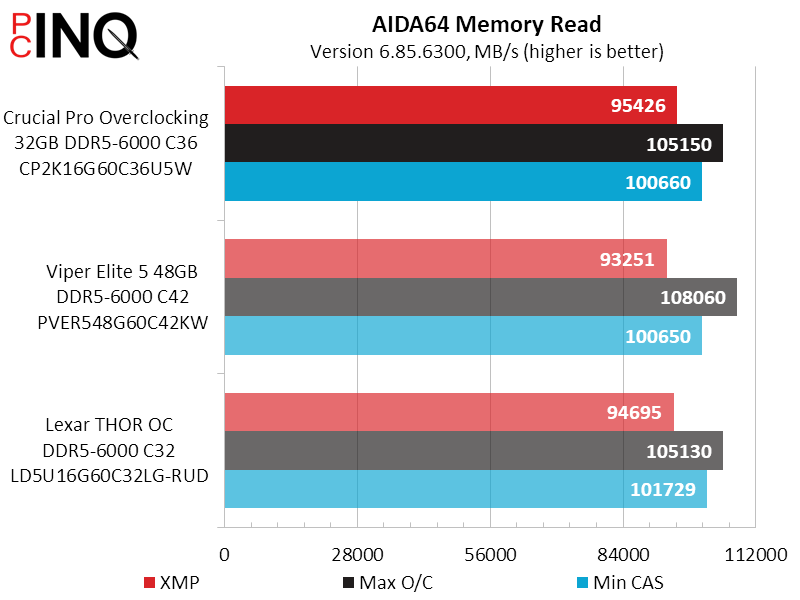
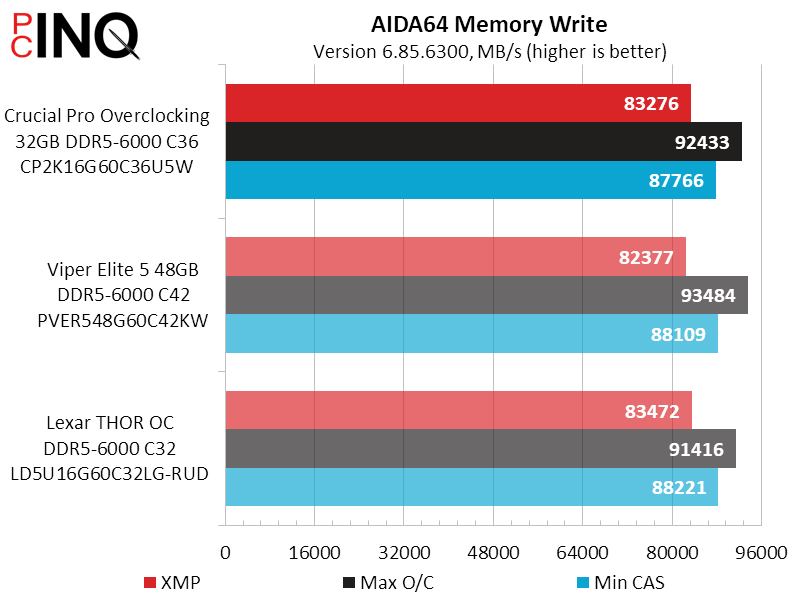


Looking for any way for one of these kits to really stand out in performance, we tried adding a couple other tests from the 3DMark suite only to end up where we started, without a clear winner.
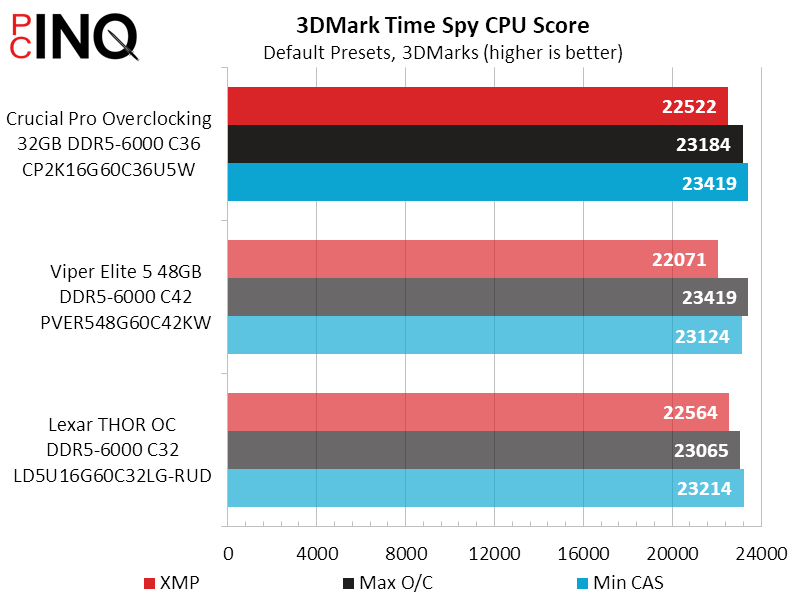
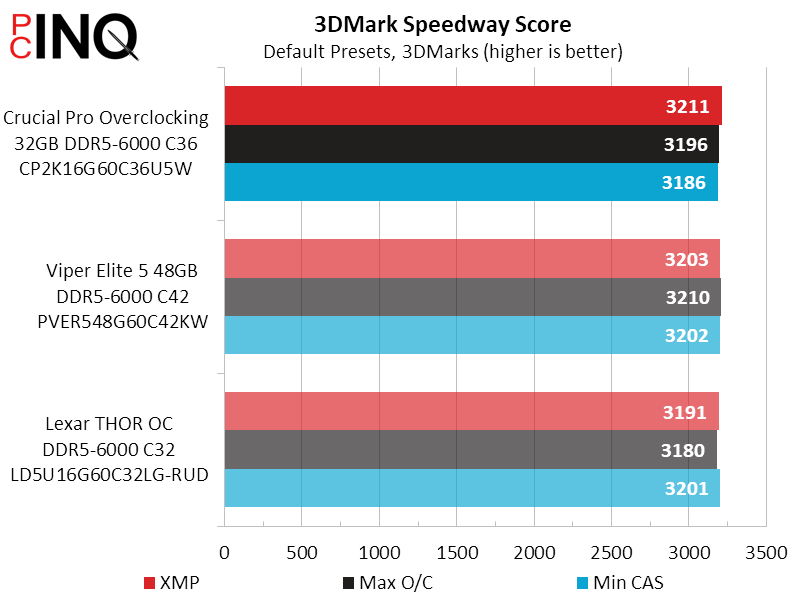
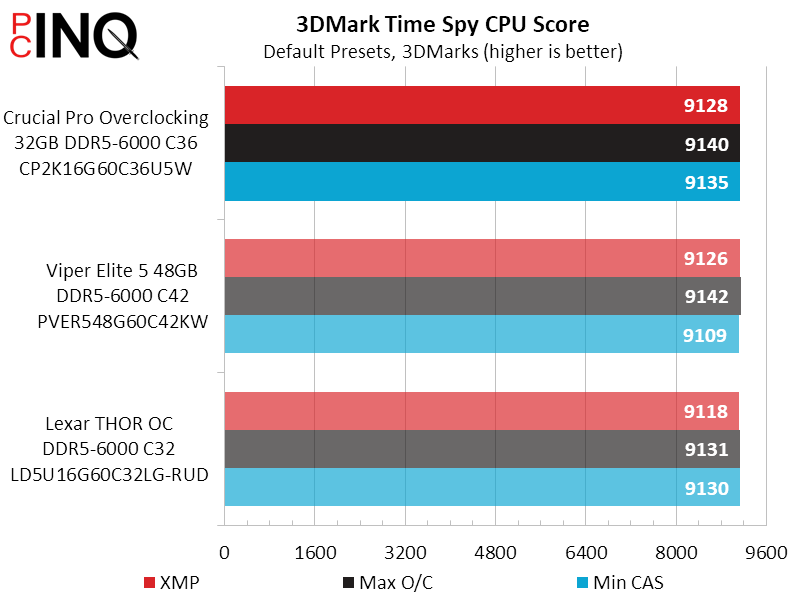
Desperate times call for desperate measures, so we added Uningine Superposition, only to again find three kits the offered very similar performance.
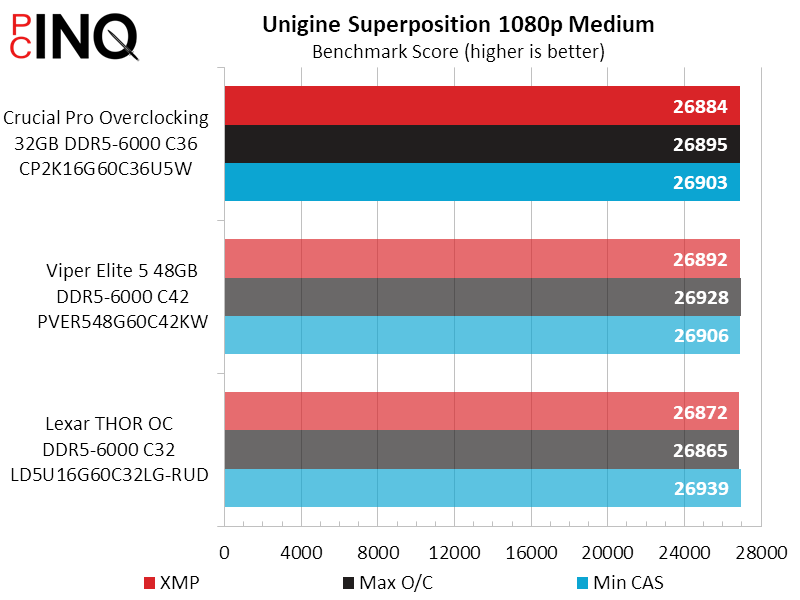
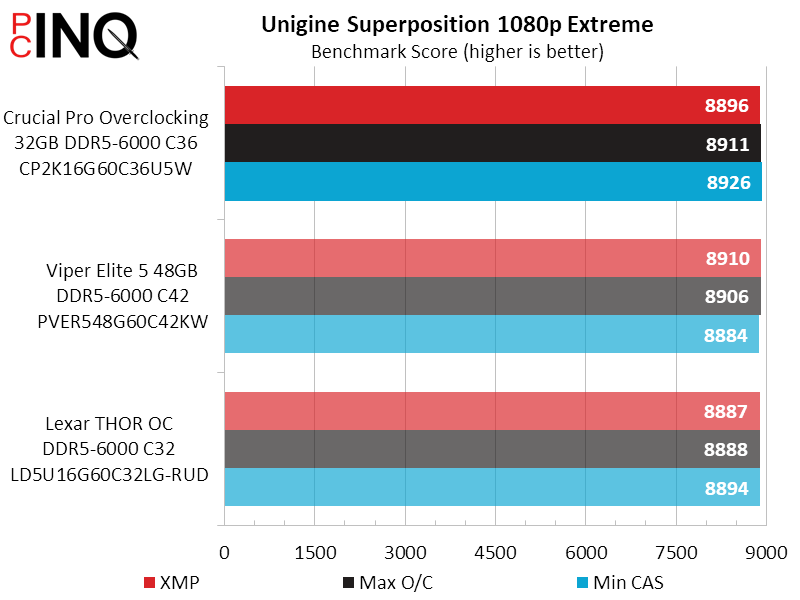

The EGO engine (of Colin McRae racing game fame) was formerly known for running into memory limits only at extreme frame rates, but that problem also seems to have gone away at speeds exceeding DDR4-3600. We did finally isolate the cause of random differences that we had been experiencing at 1080p Medium to a group of background processes that run under the label of “Steam Client WebHelper” in Task Manager. Those could scrub 5% off a high score. After minimizing those in various ways (setting Steam to offline mode and eventually taking the system offline), we tried a few more detail settings and still never got close to finding a definitive victor.
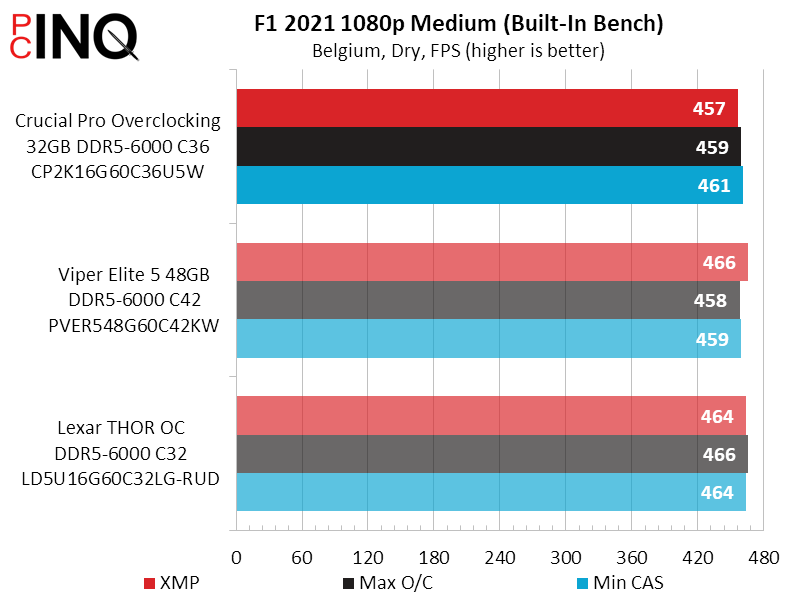
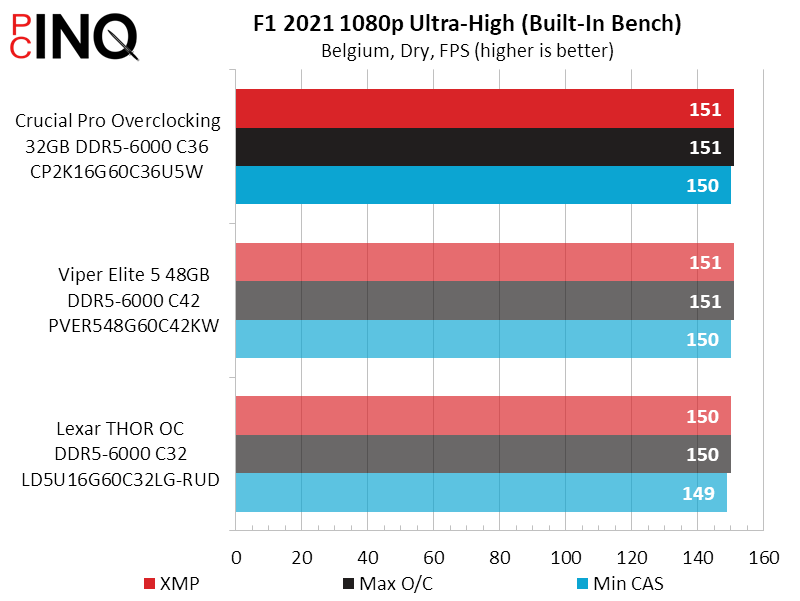
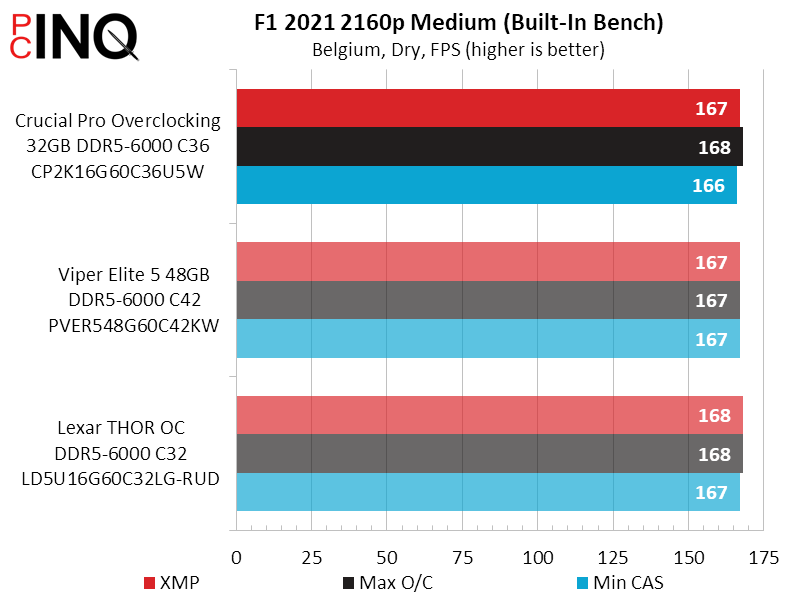

CyberPunk and Tomb Raider appear to get something from the memory tweaks, but any performance improvements are too small to impact the gaming experience.
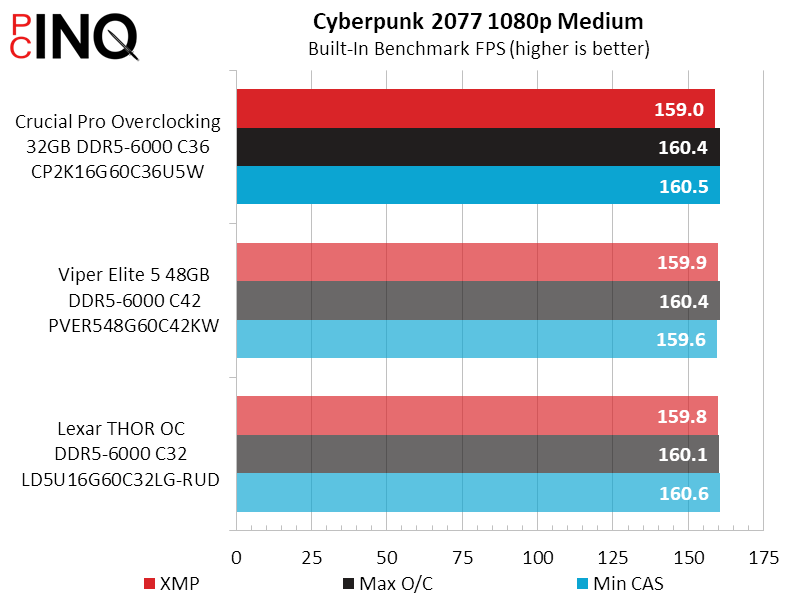
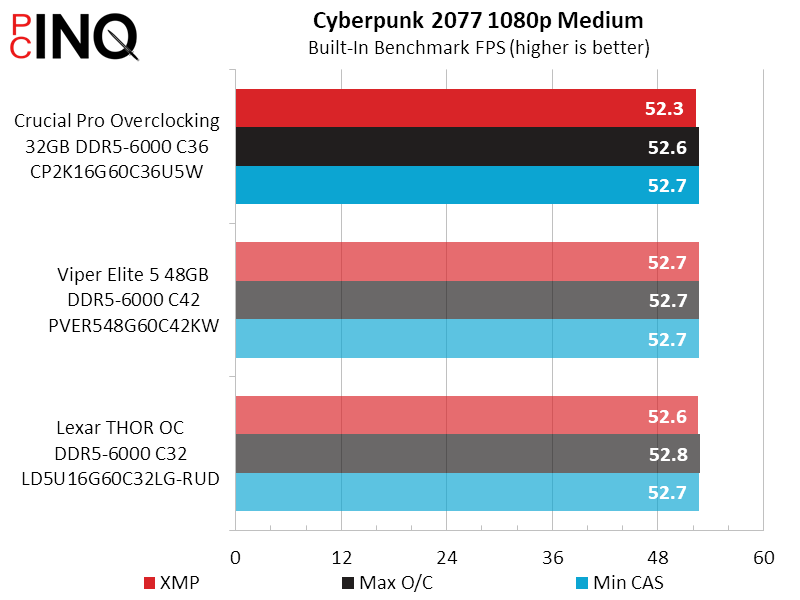
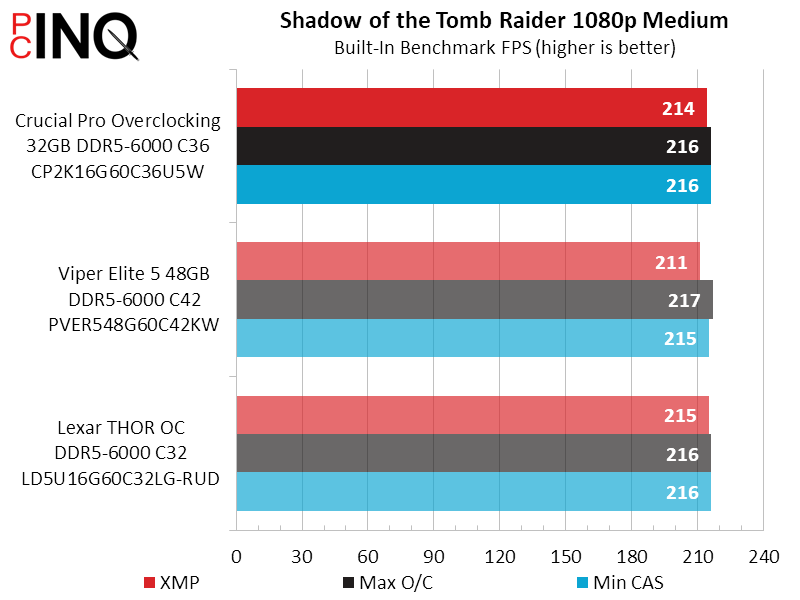

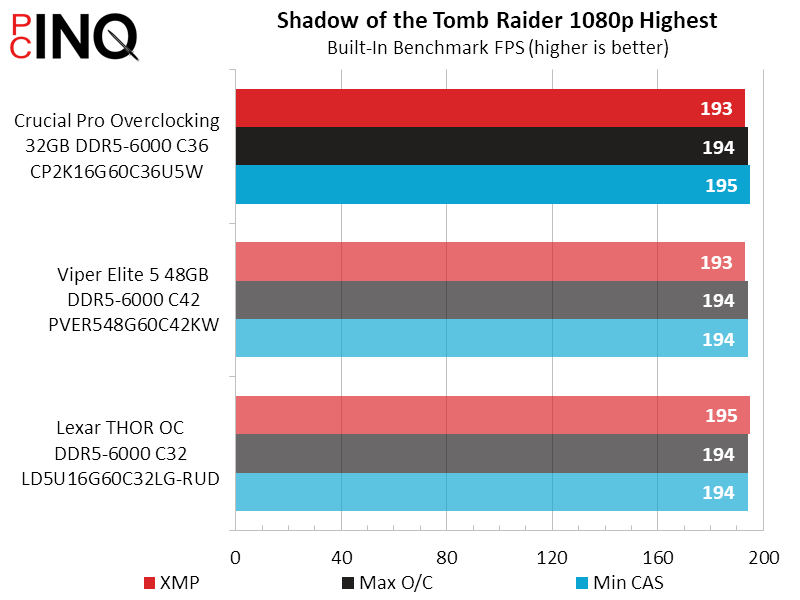
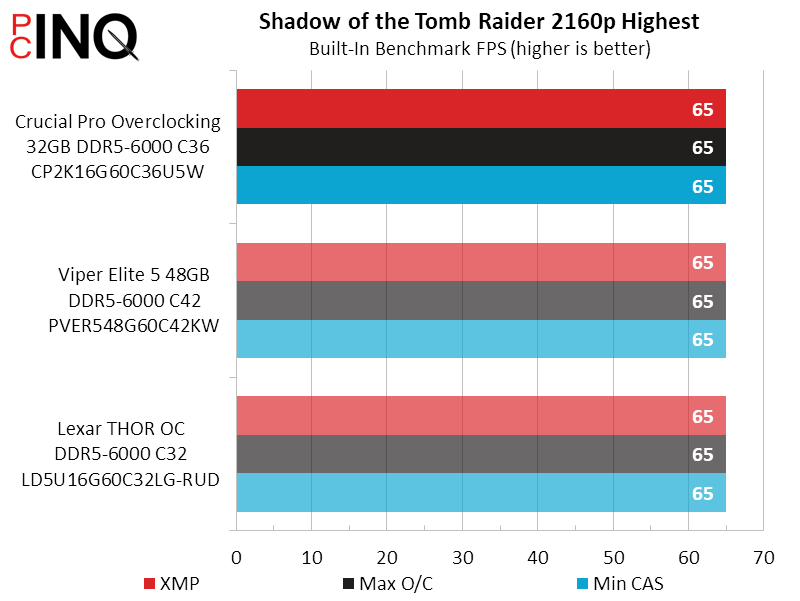
Hooray then for 7-Zip. While it didn’t show a clear victory for any specific brand, it did show noticeable improvements in compression time as a result of memory timing and frequency adjustment.
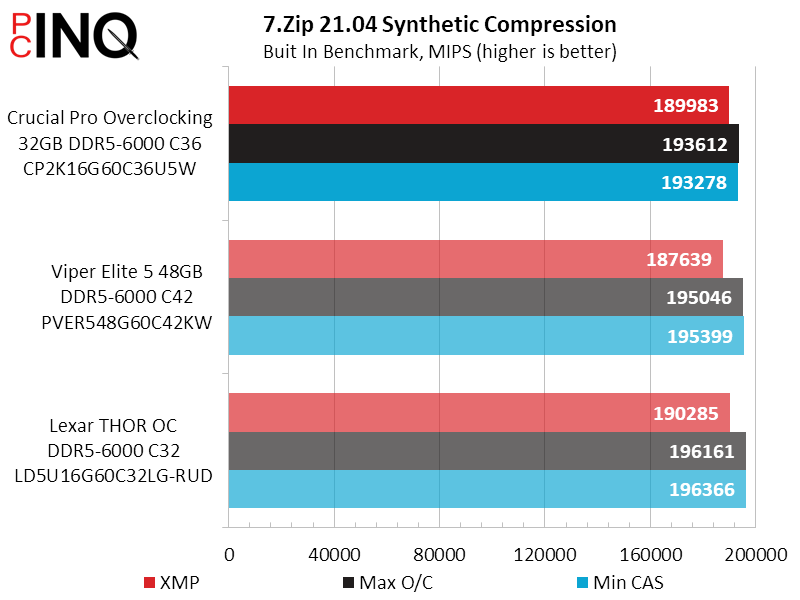
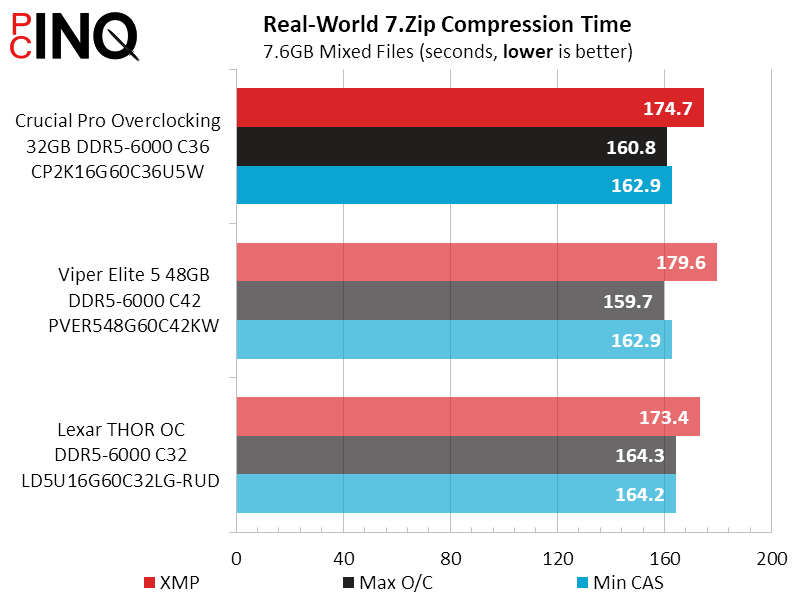
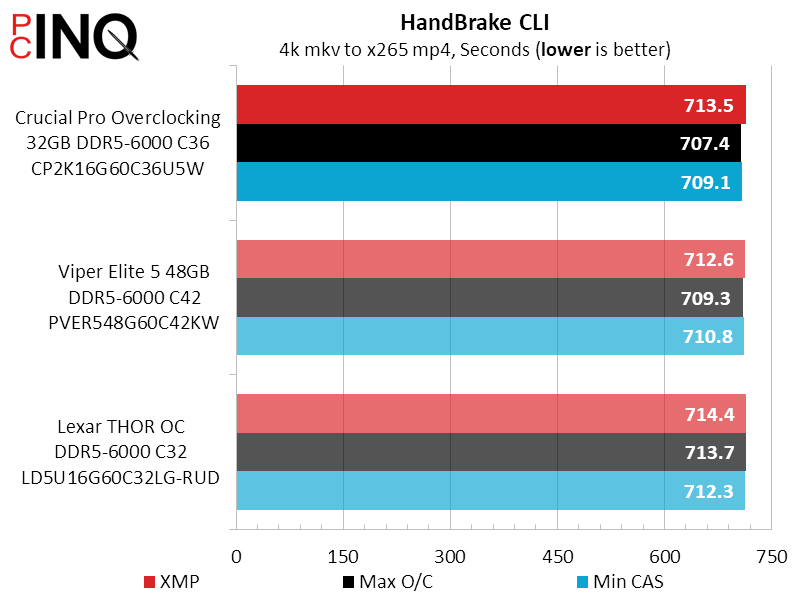
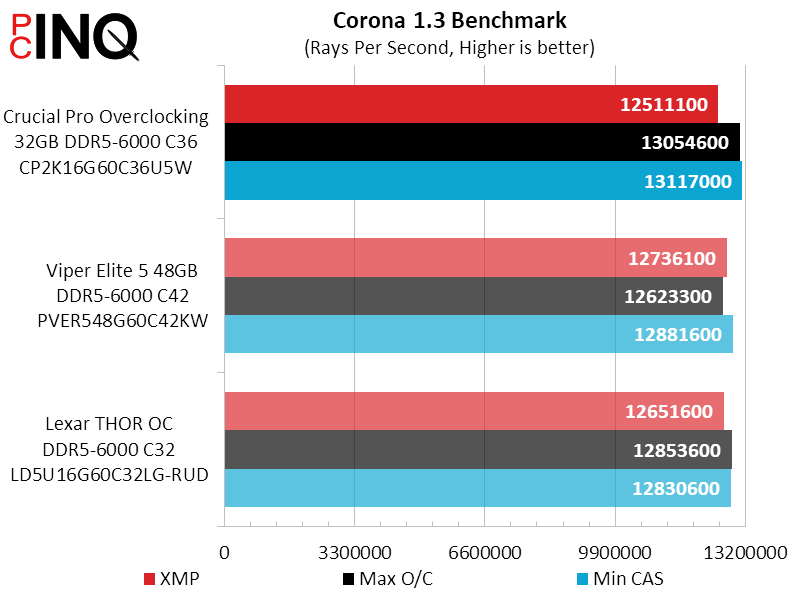
If we consider only those rare real-world benchmarks where tasks were completed faster when using faster memory, we see that the Crucial Pro Overclocking’s DDR5-7000 overclock beats the Lexar Thor OC’s DDR5-6800 overclock. And that’s it. If you’re not overclocking, or if you’re shooting for best timings at a moderate DDR5-6400, it really doesn’t matter which of these kits you get. And more importantly for Crucial’s parent Micron, top performance no longer requires sourcing ICs from one of its competitors.

| Crucial Pro Overclocking model CP2K16G60C36U5W | |
| Pros | Cons |
| High value pricing Extreme tuning capability Includes XMP and EXPO | Difficulty standing out in a crowded field |
| The Verdict | |
| Crucial’s Pro Overclocking memory brings Micron’s latest chips to the forefront, but without displacing any of the other products already there. It’s a crowded place, where these new modules stand apart on appearance alone. | |
Find it at Amazon

(click for availability)
